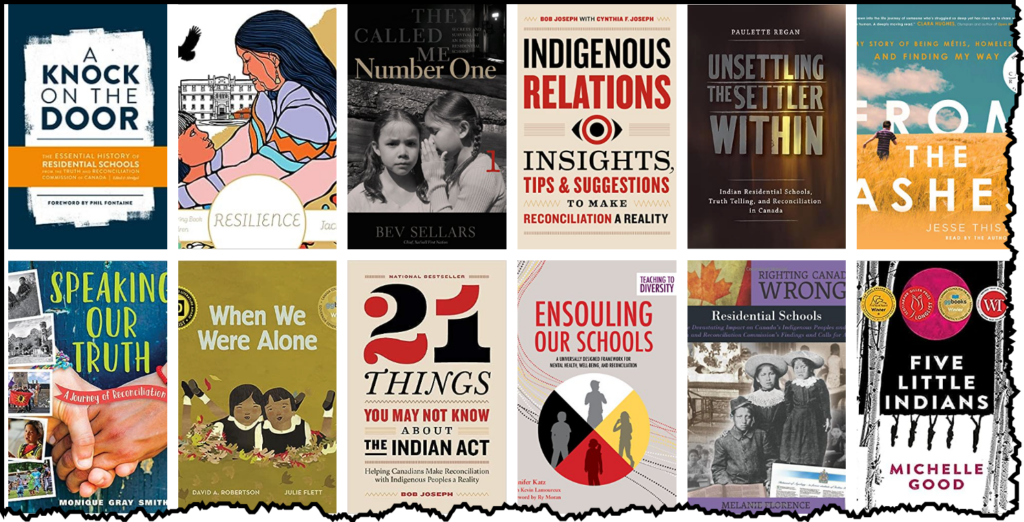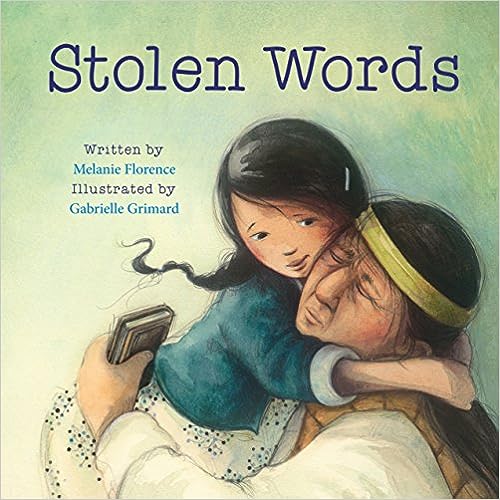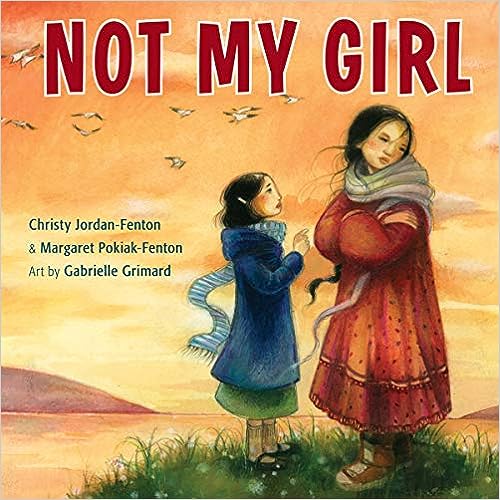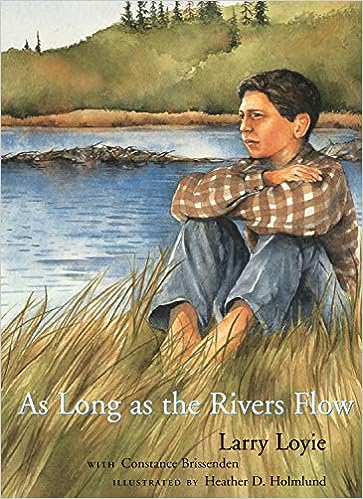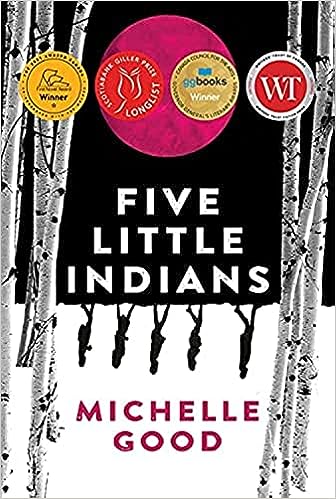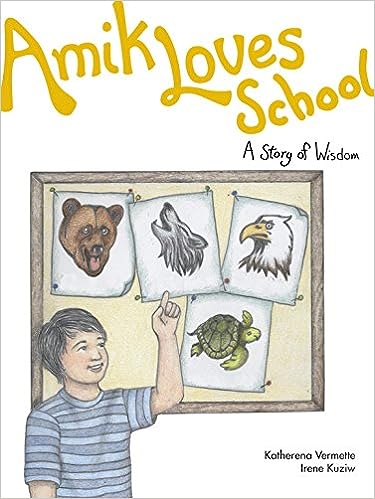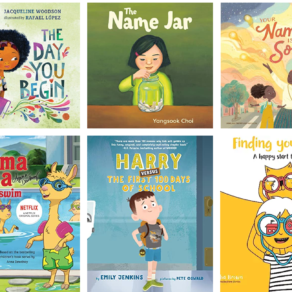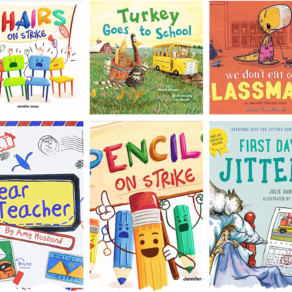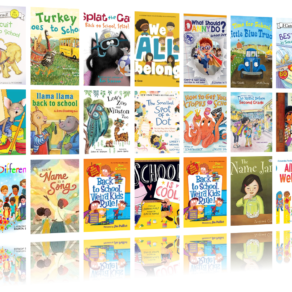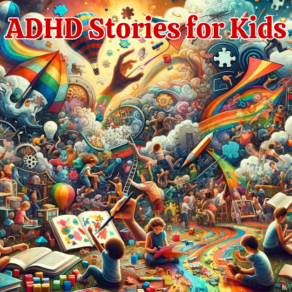Residential school books for kids is the topic of our blog post today!
The legacy of residential schools in Canada is a topic that reverberates through our society’s collective memory, affecting generations and leaving behind scars that are still healing. The books reviewed in this post not only recount personal and poignant stories of those who endured these schools but also serve as enlightening resources for teachers, parents, and anyone invested in understanding this complex and delicate subject.
These titles range from heart-wrenching accounts of survival and resilience to heartwarming narratives that celebrate the richness and vibrancy of indigenous culture. They provide a window into a period of Canadian history that must be remembered, discussed, and learned from.
If you’ve found these summaries and insights valuable, I encourage you to explore my other posts on residential schools. In them, I’ve curated more books, both fiction and non-fiction, suitable for various age groups and reading levels.
So, whether you’re an educator looking to bring these crucial topics into your classroom or a parent wanting to engage your children in meaningful conversations about our shared history, these books are a starting point. They offer a way to connect with, reflect on, and learn from the past.
Residential School Books for Kids
Here are some very good books on residential school books for kids:
1. Sugar Falls: A Residential School Story, by David A. Robertson
Summary: A heartrending tale of resilience and courage, “Sugar Falls” tells the story of Betsy, an adopted child who is forcibly taken to a residential school at age 8. Despite suffering abuse, she finds inner strength through her father’s teachings. The book serves as a tribute to Elder Betty Ross and provides an unflinching look at life in a residential school. The full-color 10th-anniversary edition adds richness to this important narrative.
2. Phyllis’s Orange Shirt, by Phyllis Webstad
Summary: In “Phyllis’s Orange Shirt,” readers are introduced to the true story behind the “Orange Shirt Day – Every Child Matters” movement. Phyllis Webstad recounts the loss of her cherished orange shirt on her first day at a residential school, symbolizing the loss of identity and dignity. It’s a poignant narrative that goes beyond Phyllis’s story to represent the shared experiences of many Indigenous children.
3. When We Were Alone, by David A. Robertson
Summary: With curiosity and tenderness, a young girl learns about her grandmother’s time in a residential school in “When We Were Alone.” Through simple yet profound questions, the grandmother explains how cultural symbols like braided hair, colorful clothing, and speaking Cree were taken from her. It’s a story that invites readers to reflect on history, culture, and the power of resilience.
4. Shin-chi’s Canoe, by Nicola I. Campbell
Summary: “Shin-chi’s Canoe” follows six-year-old Shinchi as he navigates the harsh environment of a residential school, guided by his sister’s wisdom. As he endures a monotonous routine filled with work, sparse meals, and church mass, Shinchi finds solace by holding onto a small cedar canoe, a symbol of his identity and hope. The story gracefully illustrates the experiences of Indigenous children and makes it accessible for young readers.
5. The Train, by Jodie Callaghan
Summary: “The Train” is a poignant story set in Nova Scotia, where Ashley spends time with her great-uncle near the old train tracks. He shares his painful memories of being taken to a residential school and how speaking their native Mi’gmaq language was forbidden. The tale emphasizes the significance of family and remembrance and serves as a testament to hope, resilience, and honoring what was lost.
6. A Stranger At Home: A True Story, by Christy Jordan-Fenton and Margaret Pokiak-Fenton
Summary: In “A Stranger At Home,” 10-year-old Margaret Pokiak returns to her Arctic home after two years in a residential school. Her struggle to reconnect with her family and culture is heart-wrenching, as she has been marked an outsider. Through determination and rediscovery, Margaret relearns her language and traditional ways, offering readers a compelling account of identity, belonging, and self-discovery.
7. When I Was Eight, by Christy Jordan-Fenton and Margaret Pokiak-Fenton
Summary: A child’s determination to learn to read is at the heart of “When I Was Eight.” Olemaun, also known as Margaret, endures hardships at a residential school but remains unbroken. Even when faced with cruel treatment, she never loses sight of her goal to read. Based on a true story, this book presents an empowering and inspiring tale that underscores the importance of literacy and persistence.
8. Stolen Words, by Melanie Florence
Summary: “Stolen Words” explores the bond between a young girl and her grandfather, touching on the painful legacy of residential schools. When the little girl learns that her grandfather’s Cree language was taken from him, she embarks on a journey to help him reclaim it. A delicate and uplifting story, it acknowledges the pain passed down through generations while also emphasizing the healing that love and understanding can bring.
9. Not My Girl, by Christy Jordan-Fenton and Margaret Pokiak-Fenton
Summary: “Not My Girl” continues the story of Margaret Pokiak-Fenton, picking up where “A Stranger at Home” left off. Returning home, Margaret finds her homecoming is not as she envisioned. Struggling to belong and find her place again, this book is a moving account of determination and identity. It serves as a sequel to “When I Was Eight,” and its illustrations and narrative make this profound story accessible to young readers.
10. As Long as the Rivers Flow, by Larry Loyie
Summary: This book tells the story of Larry Loyie’s last summer with his Cree tribe before being taken to a residential school. Set against the backdrop of rich cultural experiences, the story describes the adventures and lessons Larry learns, from caring for an abandoned owl to observing traditional skills. The text and illustrations gracefully capture the essence of family and tradition, providing a vivid glimpse into First Nations’ life before the interference of residential schools.
11. Five Little Indians, by Michelle Good
Summary: “Five Little Indians” chronicles the lives of five friends who were sent to a church-run residential school. Upon release, they find themselves ill-prepared for life and end up in Downtown Eastside Vancouver. The book follows their struggles, traumas, addictions, and efforts to find safety and belonging. Through an empathetic and insightful lens, the story paints a compelling portrait of survival, resilience, and the complex path to healing and self-discovery.
12. Amik Loves School, by Katherena Vermette
Summary: Aimed at young readers, “Amik Loves School” tells the tale of Amik, an Anishinaabe child who loves school and shares this joy with his grandfather, a residential school survivor. The contrast between the schools is thought-provoking, leading Amik to an idea of celebrating culture. Rich in Anishinaabe teachings and values, this heartwarming story promotes cultural appreciation and underscores the importance of remembering and honoring tradition.
Final thoughts
Navigating the complex landscape of residential schools requires compassion, understanding, and thoughtful reflection. The stories and perspectives found in these children’s books offer an approachable and empathetic way to engage with this essential part of our shared history.
From personal narratives of strength and resilience to culturally rich depictions of Indigenous life, these books are not just stories; they are doorways into lived experiences. Together, we can build bridges, foster connections, and contribute to a future where the lessons of the past inform a more compassionate and inclusive tomorrow.



